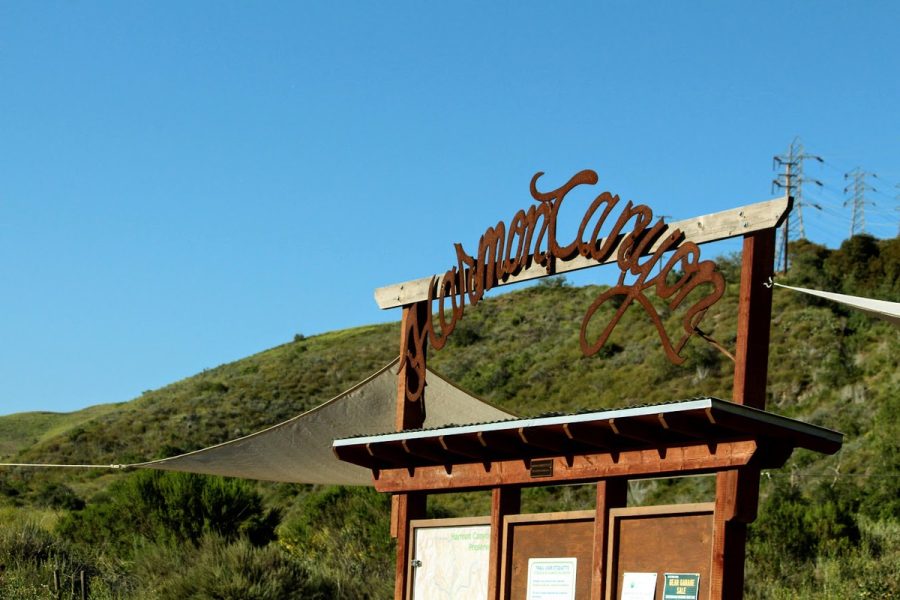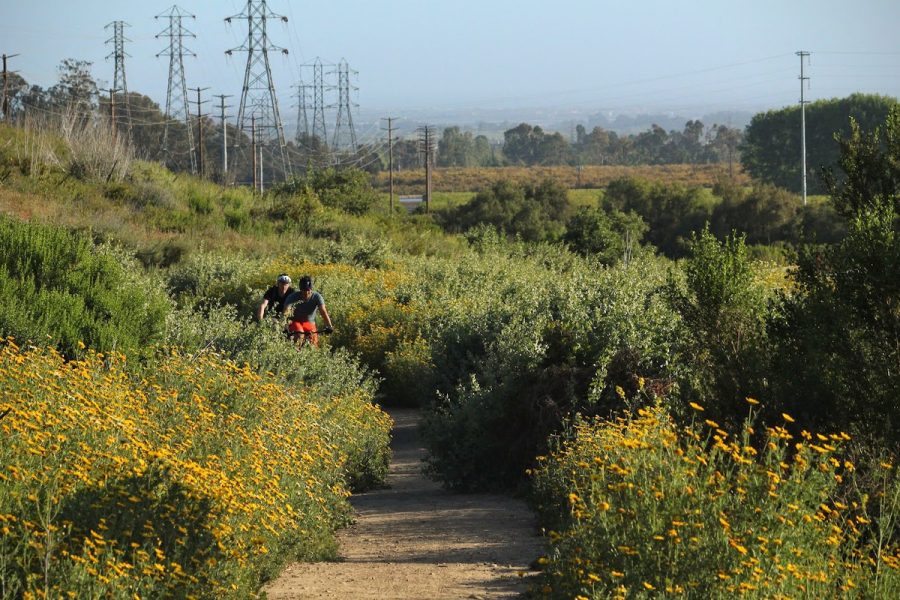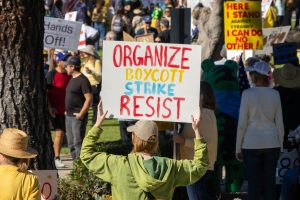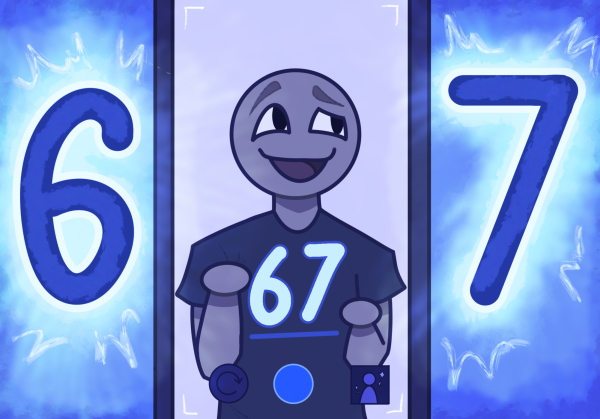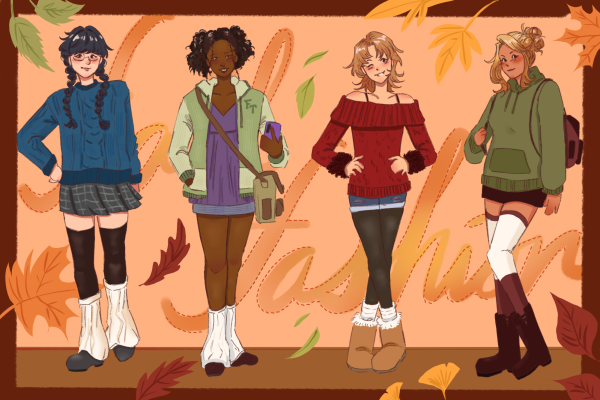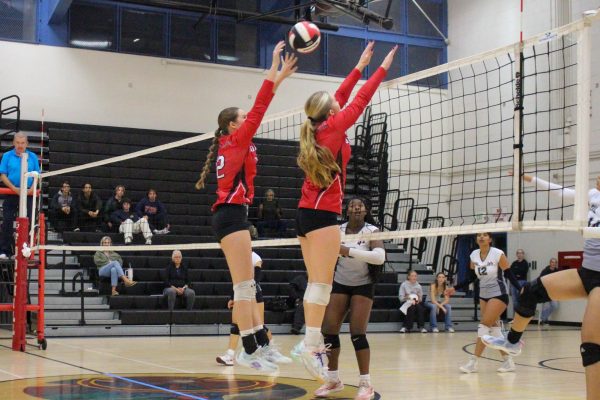Earth Day: Catching up with Runners for Public Lands
A trailhead welcomes all hikers to Harmon Canyon, nestled among green flowering hills.
April 21, 2022
In Ventura, California, we live in a postcard. Just by taking a quick step outside, we can enjoy the sight of green, rolling hills rising out of the sparkling blue ocean, palm trees swaying in the gentle breeze and the peaks of the Topatopa Mountains looming in the distance. Considering all this natural beauty, it’s no wonder that Ventura is also home to a thriving community of runners who enjoy spending their time exploring the endless miles of gorgeous trails Ventura County has to offer.
Living here in Ventura back in 2019, Vic Thasiah was both an avid member of the local running community and a passionate environmental activist. “I was volunteering with some environmental organizations in the region, and was also very active with the Ventura Running Club,” Thasiah recalls. “I thought these two communities would really work well together.” Slowly, he began developing an idea that would combine his two passions into an exciting new project that would benefit both his local community and the world.
On Earth Day 2019, this dream took shape in the form of Ventura-based nonprofit Runners for Public Lands (RPL), an organization which seeks to organize the running community for the protection and stewardship of the beautiful places in which they run. RPL also strives to promote climate action, sustainability and other forms of environmental activism both locally and nationwide.
As suggested by its name, much of RPL’s work centers around the preservation of public land with ecological value in the Ventura area. “Public lands have been so important to the history of the United States, in that they are places that are protected in terms of their ecological value, as well as places for people to recreate… and kind of find themselves again,” says Thasiah, who serves as the director of RPL in addition to his work as the environmental humanities professor at California Lutheran University. “They’re just really wonderful places to kind of renew ourselves and enjoy.”
RPL also works to emphasize the history of the lands they protect as the ancestral home of the Chumash people. It educates the public about the long and painful history of how those lands were taken from the indigenous people by early settlers. “A lot of these lands, if not all of them, are stolen lands,” says Thasiah. RPL focuses on acknowledging this fact and doing everything possible to make sure that the native peoples are respected and their history with the land understood. “We want to make sure that they have a future in these places as well.”
Of course, the factor that sets RPL apart from other environmental groups is its focus and utilization of the running community. But why runners specifically? Well, for starters, the running community is absolutely massive. According to a 2021 report by the Outdoor Foundation, 21 percent of Americans identify themselves as runners. That’s over 63 million people, quite a large audience for RPL to appeal to. However, Thasiah believes that raw numbers aren’t the only reason runners are uniquely poised to join the fight for conservation. “[Runners] are out more frequently than any other outdoor recreational group,” he says. “Whether they know it or not, they are really invested in good environmental conditions.” Having beautiful and natural places in which to run is a necessary ingredient of an enjoyable running experience, and once runners realize this, they tend to become quite motivated and passionate in their environmental stewardship efforts. It is this fact, mixed with the raw magnitude of the running community, that allows RPL to function at a high level.
Since its creation, RPL has achieved an incredible amount in a very short span of time. In addition to projects such as its work in the Harmon Canyon Preserve in Ventura, the nonprofit has actively jumped into the fight for the conservation of many at-risk public lands. “One of the events that I really enjoyed was when we ran across the Sespe Wilderness to raise awareness for logging that was going to happen at Pine Mountain,” Thasiah recalls with a smile. “We were able to generate a lot of interest in the running community to submit public comments to the U.S. Forest Service, which temporarily put a halt on logging in this really beautiful recreational area.” Pine Mountain, a popular place for camping, climbing, running and other outdoor activities, is also an important historical region for the native Chumash people. “We were really glad to be able to at least put a halt on logging plans for that mountain,” Thasiah says. Though logging has since been approved on Pine Mountain, projects like this demonstrate the scope and range of RPL’s outreach.
So what’s next for Runners for Public Lands? After being forced to a screeching halt due to the COVID-19 pandemic, RPL is now back up and running again. It has returned to the scene with renewed vigor and more ambitious goals than ever. “We are not only active in the region but also hope to support a national movement of runners connecting to environmental opportunities in their own places where they run,” says Thasiah. However, the message of RPL extends far beyond the running community, and Thasiah believes that you should be aware of the struggles facing public lands and the environment regardless of your involvement in the outdoors. “[Public lands] have become so much more precious to us especially during COVID, and with very precious things it really can be joyful and exciting and give us a sense of purpose to really project what we care about.” With this in mind, RPL and its small army of runner-activists look to the future, hoping to play their part in creating a bright, sustainable tomorrow for us all.
If you are interested in getting involved with Runners for Public Lands, visit their website or check them out on instagram (@runners4publiclands).


